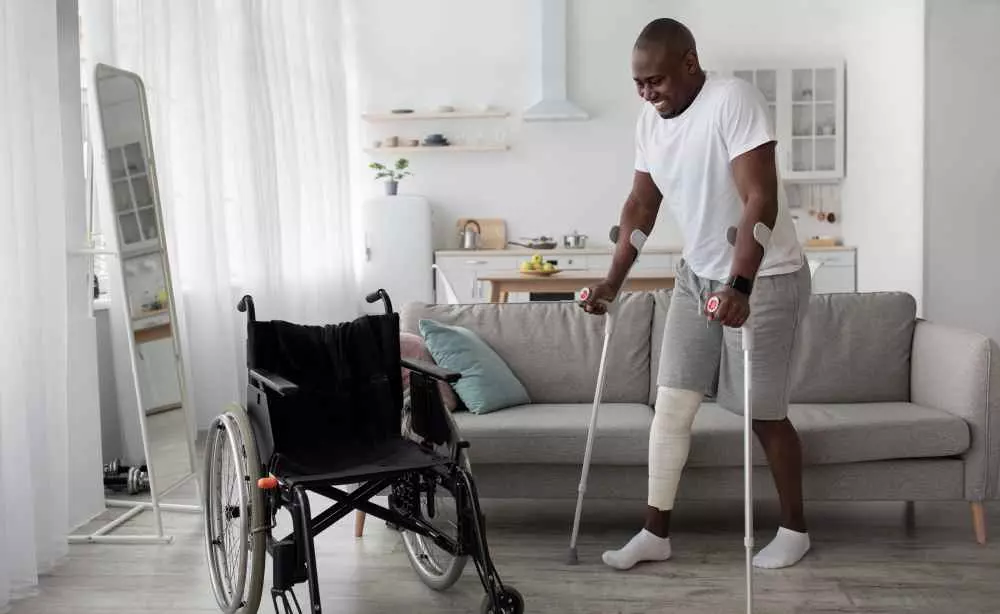Principles of rehabilitation after orthopedic surgery
Introduction
After orthopedic surgery, it is important to follow certain rehabilitation principles. Rehabilitation is a key element in the process of returning to full function after surgery. Therefore, it is worthwhile to know in detail the principles that will help you recover quickly and effectively. In this article, we will present the most important principles of rehabilitation after orthopedic surgery.
Rule 1: Start rehabilitation early.
The start of rehabilitation should be as early as possible after surgery. Exercises and physiotherapy should be started as early as the first days after surgery. Starting rehabilitation early prevents loss of muscle mass and loss of range of motion in the joints. However, it should be remembered that rehabilitation should be tailored individually to the patient and the type of surgery.
In the case of lower limb surgery, rehabilitation may consist of exercises to strengthen the leg muscles and maintain normal range of motion in the knee and hip joints. For upper extremity surgery, it is important to conduct exercises to maintain range of motion in the elbow and shoulder joints.

Rule 2: Gradually increase the intensity
During rehabilitation, it is important to gradually increase the intensity of exercises. At the beginning of rehabilitation, we focus on simple and gentle exercises that help strengthen the muscles and restore the range of motion in the joints. Gradually, we can increase the load and difficulty of the exercises performed. It is very important to perform the exercises under the supervision of a properly trained physiotherapist.
Every orthopedic surgery is different, so rehabilitation should be individually tailored to the patient. Depending on the type of surgery and the patient's condition, the physiotherapist will select the appropriate exercises and establish a rehabilitation plan tailored to the patient's capabilities.
Rule 3: Regularity of rehabilitation
Regular exercise is key to successful rehabilitation. Rehabilitation should be carried out for a specific period of time, as recommended by the doctor. It is important to take a systematic approach to rehabilitation to achieve the best possible results. Regardless of difficulties or limitations, stick to the established rehabilitation plan.
Remember that rehabilitation after orthopedic surgery requires time and patience. However, it is worth sticking to the set timelines and doing the exercises regularly. This will allow you to successfully restore fitness and avoid possible complications.
Rule 4: Cooperate with the physiotherapist
During rehabilitation after orthopedic surgery, it is important to work closely with a physiotherapist. It is the physiotherapist who will help us choose the right exercises, their correct execution technique and monitor our progress. The physiotherapist will be our guide throughout the rehabilitation process, answering our questions and adjusting the rehabilitation plan to our capabilities.
It is also a good idea to consult a physiotherapist if we experience any worrisome symptoms or pain. The physiotherapist will be able to respond in real time and adjust the rehabilitation plan to our needs.
Rule 5: Remembering to rest
Rest is also an important part of the rehabilitation process. You should pay attention to the body's signs of fatigue and give it time to recover. Overworking and overstressing the body can lead to injury and delayed rehabilitation.
Remember that rehabilitation after orthopedic surgery is a process that takes time. You shouldn't rush it, but you also shouldn't procrastinate too much. The key to success is to properly tailor rehabilitation to the patient's individual needs and abilities, and to be regular with the exercises performed.
Summary
Rehabilitation after orthopedic surgery is an essential part of the process of returning to full fitness. It is worth remembering the principles that will promote effective treatment and quick recovery. Early commencement of rehabilitation, gradual increase in intensity, regularity of exercises performed, close cooperation with the physiotherapist and remembering to rest are the key elements to pay attention to during rehabilitation after orthopedic surgery.
In each case, rehabilitation should be individually tailored to the patient. Therefore, it is always a good idea to consult a physiotherapist and a doctor who will select the right exercises and set a rehabilitation schedule. Taking care of proper rehabilitation after orthopedic surgery will speed up the return to full fitness and improve the patient's quality of life.
Add comment